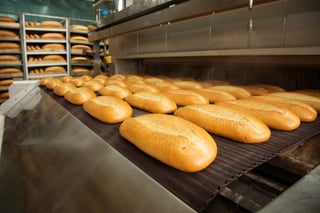 In January of 2015, the British Retail Consortium (BRC) updated its Global Standard for Food Safety. This new standard, also known as issue 7, effectively replaced the old Issue 6 standard in July of 2015.
In January of 2015, the British Retail Consortium (BRC) updated its Global Standard for Food Safety. This new standard, also known as issue 7, effectively replaced the old Issue 6 standard in July of 2015.
The question is, does your product inspection process meet BRC Food Safety Issue 7 standards for transparency and traceability?
What Do You Need to Track to Ensure Maximum Transparency & Traceability?
To ensure maximum transparency and traceability for your food inspection process, strong record-keeping is a must.
Not only should you have a record of whether a package passed or failed inspection, you should have data on:
- Rejection rates;
- Which ingredients had contaminants;
- What those contaminants were;
- Where the contaminated ingredients came from; and
- Possible sources of contamination.
It’s vital to have all of this data to ensure that you can trace contaminants back to their point of origin and remediate the issue.
Creating a Transparent and Traceable Product Inspection Process
One way to quickly and easily create a product inspection process that makes tracking this data easy is to use x-ray inspection machines in your production line. These devices can record important data such as an image of a rejected package’s contents, how many packages passed or failed the inspection over time, and more.
However, you can’t just slap an x-ray machine at any point in your production line and call it a day. To meet the BCR standard, you need to perform a thorough Hazard Analysis and pick out the best Critical Control Points to place your x-ray inspection machines as per the HACCP standard.
To abbreviate the hazard analysis process, the basic steps are:
- Create a production process flowchart;
- Note any hazards inherent to your product and its ingredients
- Identify potential process-related hazards; and
- Research those hazards and their significance/risk level.
After running the analysis, you can select one or more critical control points to place your x-ray inspection equipment for the greatest effect. In many cases, the best spots for an x-ray inspection machine include:
- Post packaging and sealing;
- At the ingredient inflow; and
- After processing.
These are the three points where most production processes will see the largest net benefit from adding an x-ray inspection machine.
Post-packaging checks act as a final quality assurance gate for manufacturers, while ingredient inflow checks can spot problems with ingredients that might indicate a supplier-side problem. Checking product just after a processing phase allows you to isolate issues such as fragments of processing equipment landing in your food product.
Having x-ray machines at each of these control points can massively improve traceability for your production process and make meeting the BRC Issue 7 standard easier.
Need help meeting BRC 7’s traceability and transparency requirements? Create a Plan for compliance by contacting us today!




